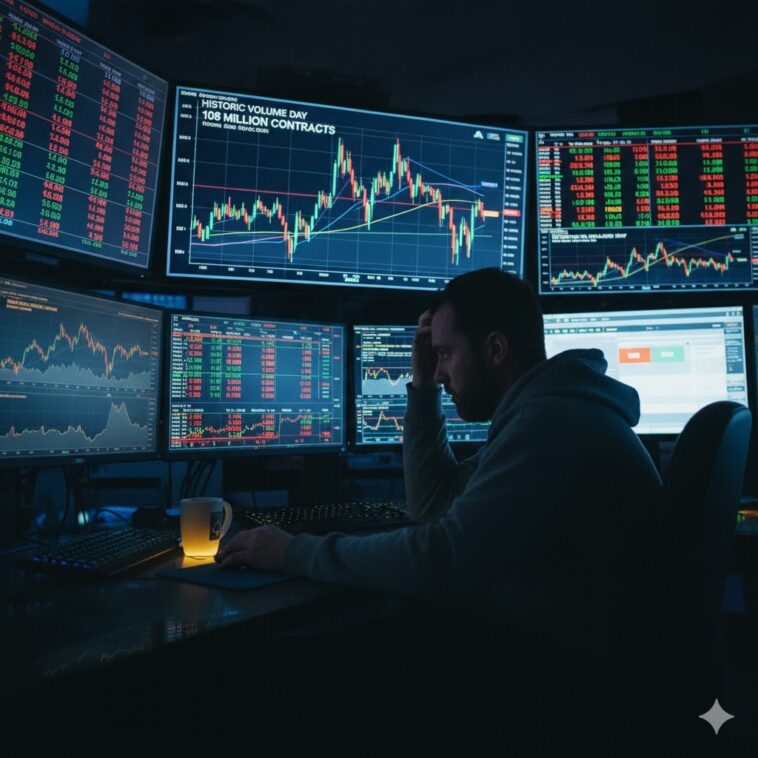A 108 Million Contract Day
The sheer scale is difficult to overstate. According to Scott Rubner, head of equity and equity derivatives strategy at Citadel Securities, Friday, October 10, saw over 108 million contracts change hands. That figure is staggering—only the second time the 100 million threshold has ever been breached.
“Retail’s bullish conviction remains extraordinary,” Rubner noted in a client message. And he has the numbers to back it up.
The options flow was heavily skewed toward calls, which are essentially bets that a stock will rise. Specifically, the retail flow tracked by the firm was 11% “better to buy” through the call/put direction ratio, utterly dwarfing the 4% average seen over the last three months. It wasn’t just a big day; it was the largest single-day call buying surge ever recorded on the platform. The streak, too, is a record-setter: this marks the 24th consecutive week with a bullish options skew, tying the longest stretch on the firm’s books. The ‘buy-the-dip’ mentality isn’t just a slogan anymore; it’s a deeply ingrained market phenomenon.
Defying the Old Playbook
What makes this particular data point so compelling is the stark divergence it reveals between individual and institutional investors. In a classic, pre-2020 market cycle, a sharp pullback like Friday’s would have been met with caution from retail and aggressive accumulation from hedge funds—the so-called “smart money.”
Not this time.
While retail traders were piling in with both hands, data from firms like Bank of America Securities and JPMorgan tells a different story for the big players. Hedge funds, the BofA report suggested, simply sat on the sidelines, refusing to buy the dip. Meanwhile, JPMorgan’s analysis noted clear institutional de-risking, suggesting it was large investors who were driving the initial market pullback in the first place.
“It’s a genuine market paradox,” said Laura Chen, Head of Market Strategy at Meridian Capital, speaking to the shift. “Retail, equipped with low-cost platforms and seemingly infinite confidence, has flipped the script. They are now the liquidity provider on market selloffs, effectively catching the falling knife that institutions are throwing.”
This conviction, so far, has been rewarded. The S&P 500, having weathered the prior Friday’s decline, surged nearly 2% by the middle of the following week. This persistent buying has successfully buoyed the market against a relentless stream of negative headlines, from geopolitical tensions to concerns over economic weakness.
The Earnings Boost and Future Outlook
This frenzied trading isn’t just making headlines; it’s boosting bottom lines. Charles Schwab, one of the primary platforms facilitating this activity, cited the jump in retail trading volume activity as a key driver for its stronger-than-expected third-quarter earnings. Daily trades on the platform were up 30% year-over-year, underscoring the sustained engagement of the individual investor.
Looking ahead, Citadel’s Rubner remains broadly optimistic, pointing to the historical seasonal strength often associated with November. However, even the most bullish strategists harbor a note of caution. Rubner added that investors should still exercise prudence and remain defensively positioned over the next several weeks.
The question for the final quarter remains: Can this extraordinary retail-driven momentum, which has worked flawlessly as a market support mechanism for over a year, sustain itself against looming economic headwinds and the inevitable profit-taking from institutional capital? Or are individual traders pushing their luck a little too far this time?



